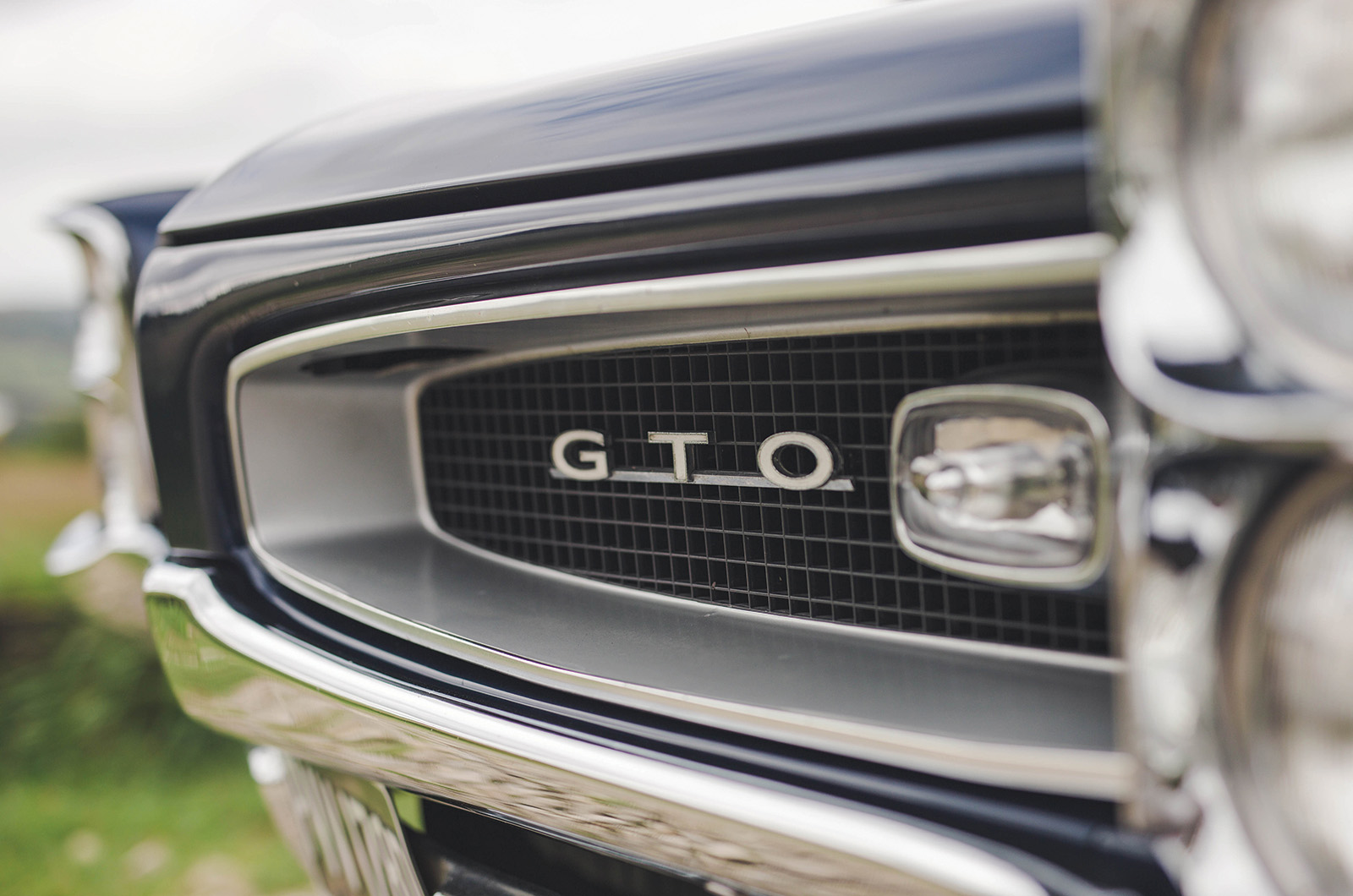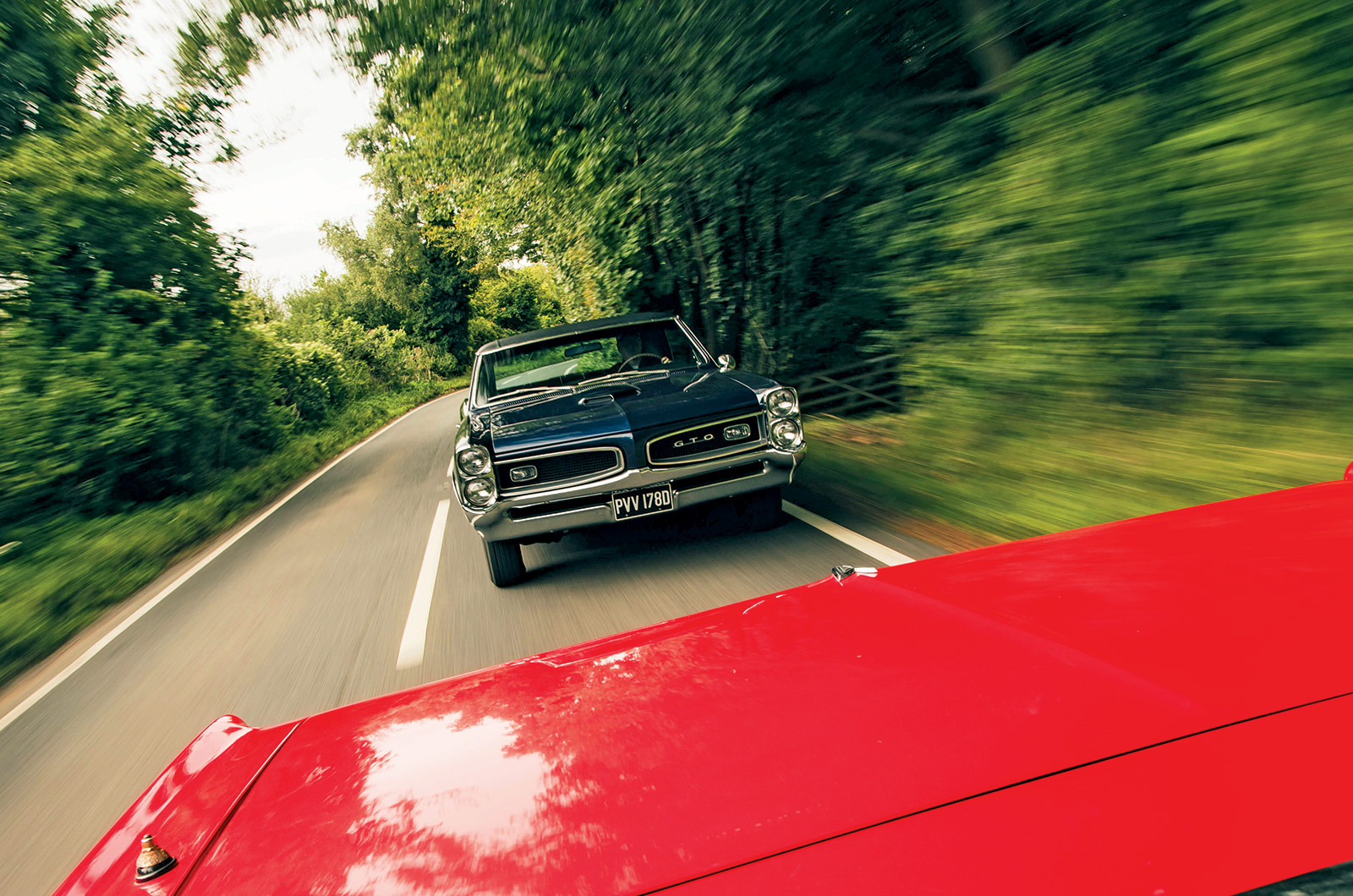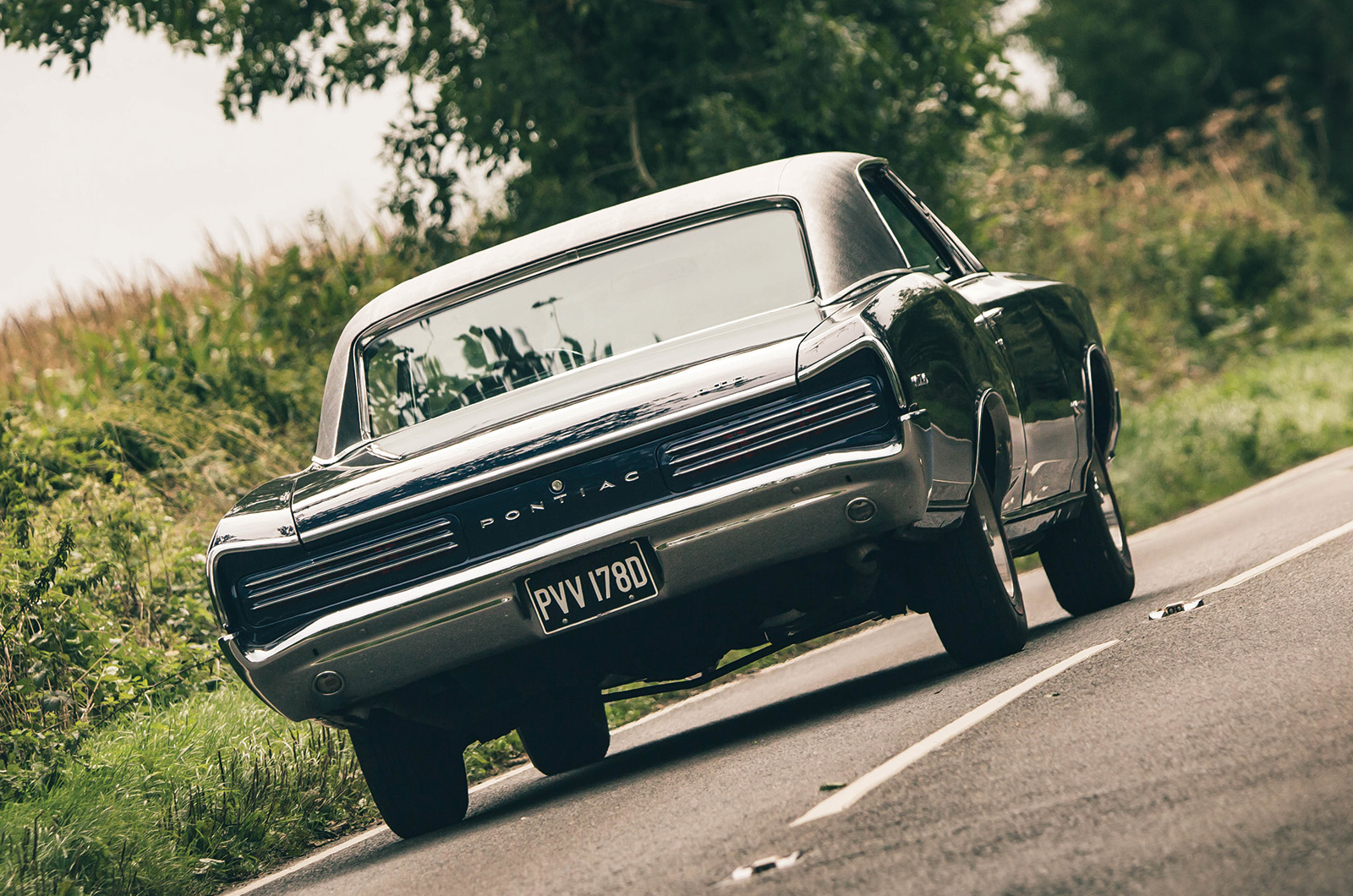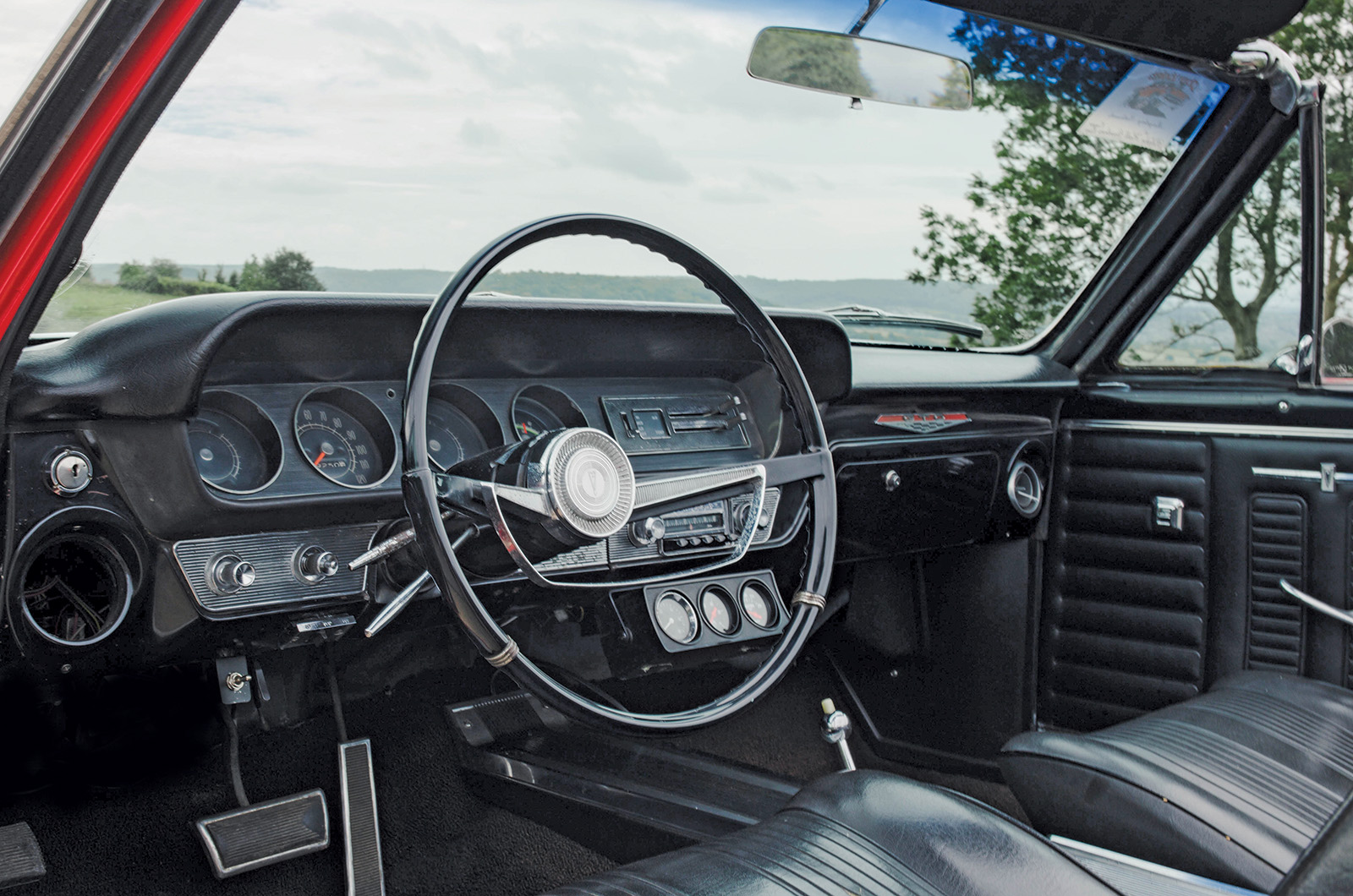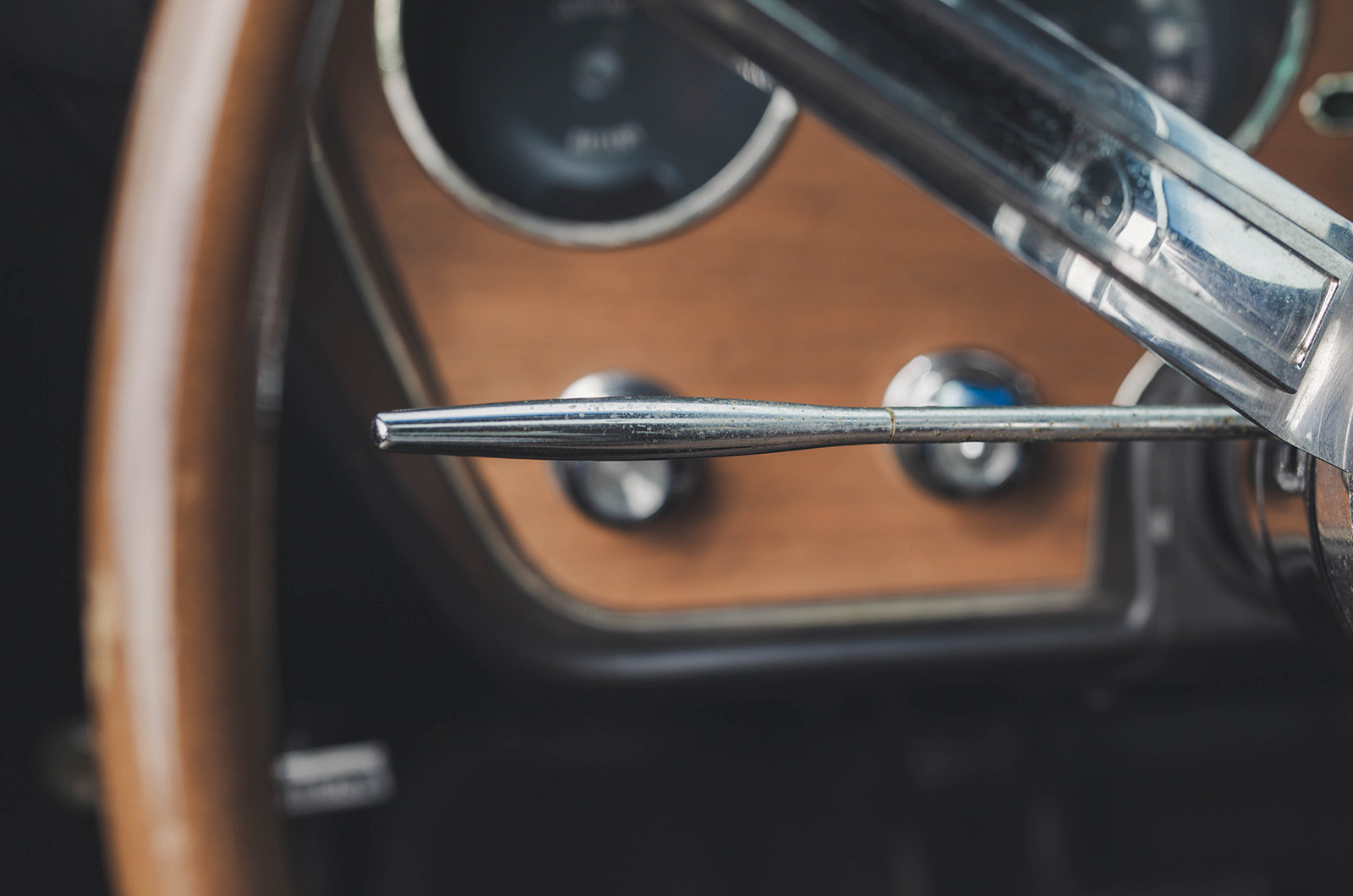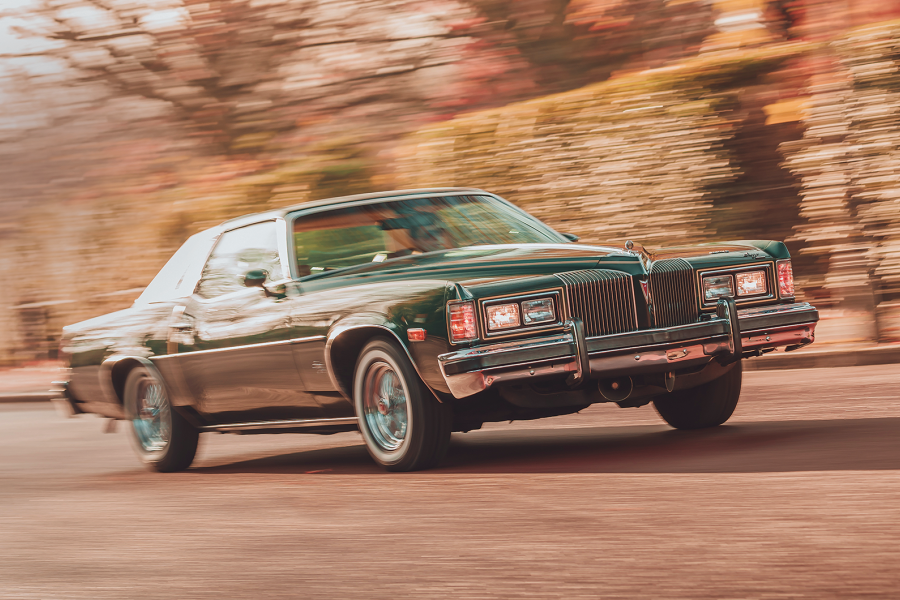With modern tyres this is less of an issue, but Robin has adapted the carburettors because he reckons you get a smoother power delivery.
Certainly the engine now pulls very cleanly, with no stuttering or hesitation.
The editor has a point. Although the GTO Convertible is certainly by definition a muscle car, it feels better suited to fast cruising up the Pacific Coast Highway with the roof down, easily overtaking any sluggish RVs in the way.
The GTO Coupe, with its Hurst shifter sticking out from the optional centre console, is more likely to be heading for the Pomona dragstrip.
Pontiac’s flexible 389cu in (6.4-litre) V8 drives through a four-speed manual in this Hardtop Coupe
Nick had reported a hesitation from the 389 when the throttles were opened fully, but it appears that, shamed by its Convertible sibling’s perfect manners, the Coupe’s carbs have started to behave themselves.
This car has a much shorter rear axle, which I suspect must be fitted due to the M21 close-ratio four-speed.
If you wanted an automatic GTO in 1966 you still got the two-speed unit; a year later Pontiac fitted the three-speed Turbo Hydramatic 400.
Interestingly, in 1966 manual-transmission GTOs outsold automatics by almost two-to-one, but in 1967 it was nearer to 50:50. Clearly the two-speed transmission put off many buyers.
This Pontiac GTO Hardtop Coupe has four speeds, but only two are used much of the time
The eagle-eyed might have spotted from the photographs that the 1966 car wears a rear anti-roll bar.
The factory didn’t fit one of these to GTOs until the 1970 model-year, and the result was said to be the best-handling version yet.
Word is that a rear anti-roll bar was tried on the earlier GTOs, but it made the steering twitchy at speed and hurt the ride.
I wouldn’t call this car’s steering nervous, but it certainly lacks feel and precision, and isn’t anywhere like as accurate as the helm on Robert’s earlier Convertible.
The definitive Pontiac GTO profile
Fitting the quicker-ratio steering box, along with a visit to Autopontiac to have the geometry checked and set up, would dramatically improve this car.
That said, the Coupe is still wonderful to drive.
The gearbox has a slow but sure action, and you can save yourself some work by pulling away in second and then shifting straight into fourth, in which you can leave it until you get to a traffic jam or a tight roundabout.
Rich chrome adorns the Pontiac GTO Hardtop Coupe’s bodywork
GTOs came with bucket seats, so there’s no canoodling on the front bench at a drive-in movie – as no doubt many young owners did in the 1960s.
There’s stacks of room in the back for any monkey business, though. De Lorean’s plan worked, and plenty of GTOs were bought by youngsters – even high-school kids.
Many buyers would have no doubt read the March 1964 issue of Car and Driver magazine, in which the team pitched the Pontiac GTO against a Ferrari 250GTO.
The homespun machine had terrific performance that was not unrelated to the fact that Pontiac had allegedly sneaked a 421cu in engine under its hood.
Sleek stalk behind the Pontiac GTO Hardtop Coupe’s steering wheel
Less well known is the performance of a Tempest fitted with a Super Duty engine from a Catalina super-stocker that took part in the 1963 ‘Daytona Continental’ three-hour grand-touring road race known as the American Challenge Cup.
Two Ferrari GTOs were in the race: one a NART car piloted by Glenn ‘Fireball’ Roberts, the other a private entry driven by David Piper.
The Ferraris finished the race in fourth and fifth spots respectively, but top of the podium was Paul Goldsmith in his Pontiac Tempest.
John De Lorean would have been aware of this remarkable victory and known his plan to drop a big motor into a Tempest was a good one.
The Pontiac GTO is easy to place on the road, despite its size
Both of these Pontiac GTOs we’ve been driving are spectacular.
Which one would I choose? Because of its styling I’d go for the 1966 Hardtop Coupe, but with the steering and suspension modifications of Robert’s ’64 Convertible and a more modern four-speed automatic gearbox in place of the Muncie manual.
That, I think, would be just about the perfect GTO.
Or Gran Turismo Omologato, as John ‘Zee’ De Lorean would probably prefer you said it.
Images: Jack Harrison
Factfiles
1964 Pontiac GTO Convertible
- Sold/number built 1964/6644
- Construction steel chassis, steel body
- Engine all-iron, ohv 6375cc V8, three twin-choke carburettors
- Max power 348bhp @ 4900rpm
- Max torque 431lb ft @ 3600rpm
- Transmission three/four-speed manual or two-speed automatic, RWD
- Suspension: front independent, by wishbones, anti-roll bar rear live axle, four links; coil springs, telescopic dampers f/r
- Steering power-assisted steering box
- Brakes drums, optional servo
- Length 16ft 9in (5156mm)
- Width 5ft 1in (1861mm)
- Height 4ft 5in (1333mm)
- Wheelbase 9ft 6in (2921mm)
- Weight 3720lb (1860kg)
- Mpg 16-18
- 0-60mph 6.6 secs
- Top speed 115mph (varies with gearbox/final-drive options)
- Price new £1100 (1964)
- Price now £25-60,000*
1966 Pontiac GTO Hardtop Coupe
(where different from Convertible)
- Sold/number built 1966/24,217
- Length 17ft 2in (5242mm)
- Width 6ft 1in (1899mm)
- Height 4ft 6in (1376mm)
- Weight 3638lb (1653kg)
- 0-60mph 5.8 secs
- Price new £1116 (1966)
*Prices correct at date of original publication
Enjoy more of the world’s best classic car content every month when you subscribe to C&SC – get our latest deals here
READ MORE
Dragstalgia: meeting the stars of the strip at Santa Pod
Ford Mustang at 60: Route 66 in the original pony car
Heavy metal thunder: Chevrolet Chevelle, Pontiac GTO, Plymouth SuperBird, Dodge Charger and Ford Torino
Colin Goodwin
Colin Goodwin is a contributor to Classic & Sports Car

